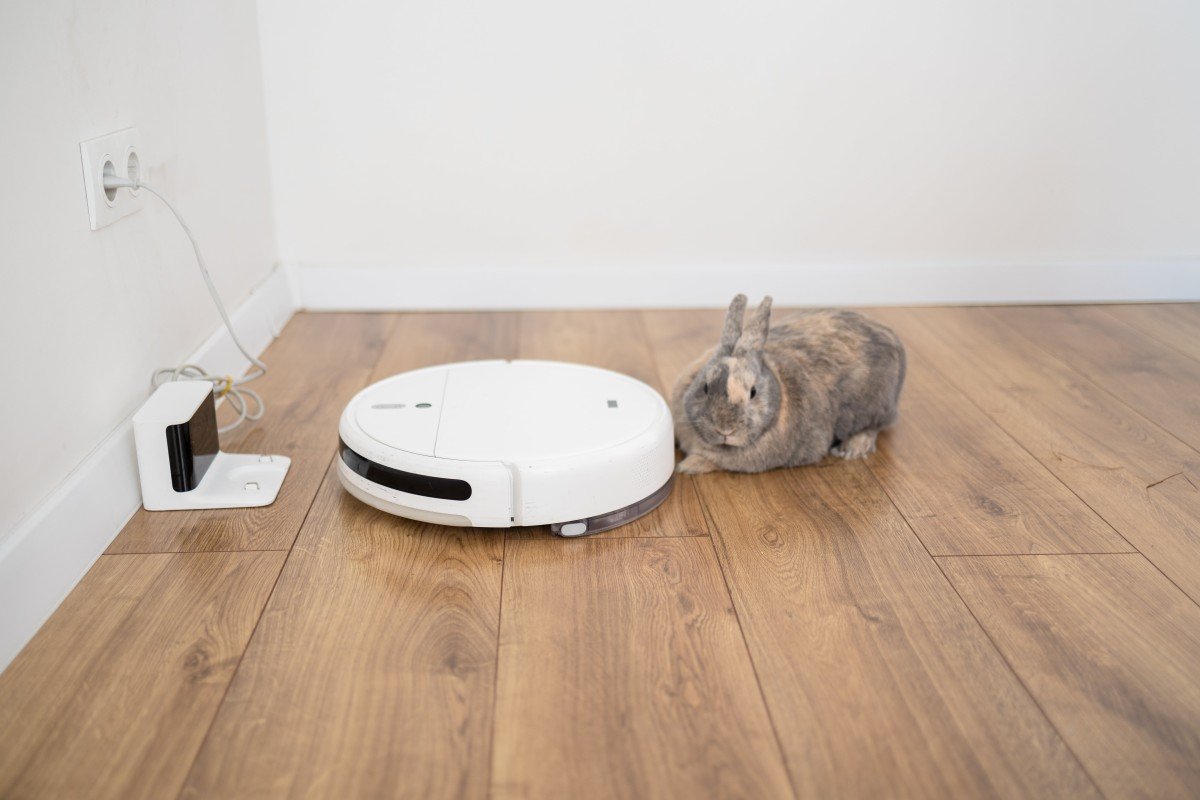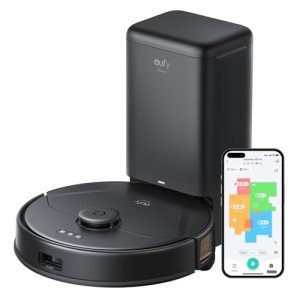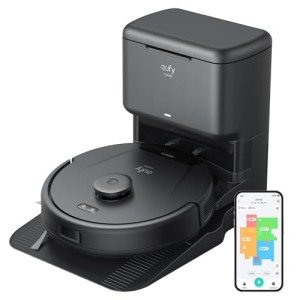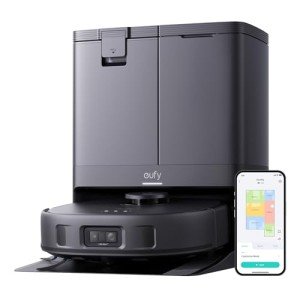In the age of smart technology, self-emptying robot vacuum cleaners have revolutionized the way we keep our homes clean. These innovative devices are designed to make the tedious task of vacuuming more convenient and efficient. With their automated self-emptying feature, homeowners can enjoy a hands-free cleaning experience like never before. This guide will explore the world of self-emptying robot vacuum cleaners, including how they work, their benefits, maintenance tips, and more.
What are Self-Emptying Robot Vacuum Cleaners?
Self-emptying robot vacuum cleaners, also known as self-emptying robot vacuums, are advanced cleaning devices equipped with a self-emptying bin. Unlike traditional robot vacuum cleaners that require manual emptying of the dustbin, self-emptying models can automatically empty the collected dirt and debris into a designated disposal bin or bag. This feature eliminates the need for frequent maintenance and ensures continuous cleaning operation without interruption. Self-emptying robot vacuum cleaners are equipped with sensors and a docking station that allows them to navigate back to the base for emptying when the dustbin is full. Once the robot vacuum docks itself, the self-emptying mechanism kicks in, transferring the debris from the dustbin into the disposal bag. Some models even come with a self-sealing disposable bag that traps the dirt, preventing it from escaping back into the air.
How Self-Emptying Robot Vacuum Cleaners Work
Self-emptying robot vacuum cleaners utilize a combination of sensors, motors, and programming to efficiently clean your home without constant human intervention. The basic operation of a self-emptying robot vacuum can be broken down into the following steps:
- Cleaning Mode Activation: The user schedules or manually activates the robot vacuum cleaner to start cleaning.
- Navigation and Cleaning: The robot vacuum moves throughout the designated cleaning area using sensors to detect obstacles, stairs, and drop-offs. It cleans the floors using brushes and suction power, collecting dirt, dust, and debris along the way.
- Bin Full Detection: As the dustbin reaches its capacity, sensors inside the robot vacuum detect that it's time for emptying.
- Return to Docking Station: The robot vacuum autonomously navigates back to its docking station, which serves as a charging point and dustbin emptying station.
- Self-Emptying Mechanism: Once docked, the self-emptying mechanism is activated, transferring the contents of the dustbin into the disposal bag or bin.
- Resuming Cleaning: After emptying the dustbin, the robot vacuum can either resume cleaning from where it left off or wait for the next cleaning cycle, depending on the user's preferences.
Benefits of Self-Emptying Robot Vacuum Cleaners
Self-emptying robot vacuum cleaners offer a range of benefits that make them an attractive option for homeowners looking to simplify their cleaning routine and maintain a consistently clean home. Some of the key benefits include:
- Convenience: The self-emptying feature eliminates the need for manual emptying of the dustbin, saving time and effort for the user.
- Continuous Cleaning: With the ability to empty the dustbin automatically, self-emptying robot vacuum cleaners can operate for longer periods without interruption.
- Efficiency: The advanced sensors and mapping technology used in self-emptying robot vacuums ensure thorough and efficient cleaning of the entire living space.
- Versatility: These devices are capable of cleaning various floor types, including hardwood, carpet, and tile, adapting their cleaning methods accordingly.
- Smart Home Integration: Many self-emptying robot vacuum cleaners are compatible with smart home systems, allowing users to control them via voice commands or smartphone apps.
- Allergy-Friendly: Self-emptying robot vacuum cleaners with HEPA filters can help improve indoor air quality by capturing allergens and fine dust particles.
Factors to Consider Before Buying a Self-Emptying Robot Vacuum Cleaner
Before investing in a self-emptying robot vacuum cleaner, there are several factors to consider to ensure you choose a model that meets your specific needs and preferences:
- Cleaning Performance: Look for a robot vacuum with strong suction power and effective brush systems to ensure thorough cleaning of different floor types.
- Navigation Technology: Advanced navigation features such as laser mapping or visual SLAM technology can help the robot vacuum navigate obstacles and clean in a systematic pattern.
- Battery Life: Longer battery life will allow the robot vacuum to clean larger areas without needing frequent recharging.
- Dustbin Capacity: Consider the size of the dustbin and how frequently the robot vacuum needs to empty it, especially in homes with pets or high foot traffic.
- Smart Features: Check for smart connectivity options, scheduling capabilities, and compatibility with virtual assistants for seamless control.
- Noise Level: Some robot vacuums operate more quietly than others, which can be important if you prefer minimal noise disruption.
Top Brands Offering Self-Emptying Robot Vacuum Cleaners
Several reputable brands in the home cleaning industry offer self-emptying robot vacuum cleaners with various features and price points:
- iRobot Roomba - Known for its innovative robot vacuum technology, iRobot Roomba offers a range of self-emptying models with advanced navigation and mapping capabilities.
- Ecovacs Deebot - Ecovacs Deebot is a popular choice for self-emptying robot vacuum cleaners that combine powerful suction with smart connectivity features.
- Shark IQ - Shark IQ robot vacuums feature self-emptying technology and advanced sensors for efficient cleaning of multiple rooms.
- Samsung Powerbot - Samsung Powerbot offers self-emptying robot vacuum cleaners with cycloneForce technology for strong suction and multi-room cleaning.
- Neato Robotics - Neato Robotics produces self-emptying robot vacuums with laser-guided mapping and customizable cleaning preferences.
How to Maintain a Self-Emptying Robot Vacuum Cleaner
Proper maintenance is key to ensuring the longevity and performance of your self-emptying robot vacuum cleaner. Here are some essential maintenance tips to keep your device in top condition:
- Empty the Self-Emptying Bin Regularly: While the robot vacuum can empty its own dustbin, it's essential to empty the self-emptying bin and replace the disposal bag as needed.
- Clean the Brushes and Filters: Remove any hair, debris, or dust that may be tangled in the brushes and clean or replace the filters to maintain optimal suction power.
- Check for Blockages: Regularly inspect the brush rollers, wheels, and sensors for any obstructions that could hamper the robot vacuum's performance.
- Clean the Sensors: Dirt or dust accumulation on the sensors can affect the robot vacuum's navigation abilities, so gently clean them with a soft cloth.
- Update Software: Keep the robot vacuum's software up to date by installing any available firmware updates to ensure optimal performance and new features.
- Inspect Charging Contacts: Make sure the charging contacts on both the robot vacuum and docking station are clean to maintain a consistent charging connection.
Tips for Maximizing the Efficiency of Self-Emptying Robot Vacuum Cleaners
To get the most out of your self-emptying robot vacuum cleaner and ensure your home stays clean and fresh, consider the following tips:
- Establish Cleaning Zones: Create virtual boundaries or no-go zones using the robot vacuum's app to restrict areas where you don't want the device to clean.
- Schedule Regular Cleaning Cycles: Set up a cleaning schedule based on your household's needs to ensure consistent maintenance of your floors.
- Clear Clutter from Floors: Remove small objects, cords, and obstacles from the floor that could impede the robot vacuum's path or get tangled in the brushes.
- Elevate Power Levels for Carpet Cleaning: Increase the suction power when cleaning carpets or rugs to effectively lift dirt and debris embedded in the fibers.
- Invest in Virtual Walls: If your robot vacuum doesn't support virtual boundaries, consider purchasing virtual wall accessories to create no-go zones.
- Optimize Charging Placement: Place the docking station in a central location with easy access for the robot vacuum to ensure efficient recharging between cleaning cycles.
Common Issues and Troubleshooting Tips for Self-Emptying Robot Vacuum Cleaners
Even the most advanced self-emptying robot vacuum cleaners can encounter issues that may affect their performance. Here are some common problems you may encounter and how to troubleshoot them:
- Robot Vacuum Gets Stuck: Check for obstacles or loose cords that may be obstructing the robot vacuum's movement. Clear the area to allow the device to resume cleaning.
- Poor Suction Power: Clean the brushes and filters to remove any debris or blockages that could be affecting the suction power of the robot vacuum.
- Error Messages on Display: Refer to the user manual to identify the meaning of the error message and follow the recommended troubleshooting steps.
- Navigation Issues: Ensure that the sensors and cliff sensors are clean and unobstructed to help the robot vacuum navigate effectively around obstacles.
- Self-Emptying Mechanism Malfunction: If the self-emptying feature is not working correctly, check the connection between the robot vacuum and the docking station and restart the device.
- Battery Not Holding a Charge: Clean the charging contacts on both the robot vacuum and docking station and place the device back on the dock to ensure a secure connection.
Frequently Asked Questions (FAQs)
Are self-emptying robot vacuum cleaners worth the investment?
- Yes, self-emptying robot vacuum cleaners offer convenience and efficiency, making them a worthwhile investment for those looking to streamline their cleaning routine.
How often do I need to replace the disposal bags in a self-emptying robot vacuum cleaner?
- The frequency of replacement depends on factors such as the size of your living space and the amount of dirt and debris the robot vacuum collects. As a general guideline, aim to replace the disposal bag every 1-2 months.
Can self-emptying robot vacuum cleaners clean multiple rooms in one cycle?
- Yes, most self-emptying robot vacuum cleaners are designed to clean multiple rooms by autonomously navigating from one area to another and returning to the docking station for emptying.
Do self-emptying robot vacuum cleaners work on carpets and rugs?
- Yes, self-emptying robot vacuum cleaners are equipped to clean various floor types, including carpets and rugs. Some models offer carpet detection technology to adjust suction power accordingly.
Are self-emptying robot vacuum cleaners loud during operation?
- While noise levels may vary depending on the model, self-emptying robot vacuum cleaners are generally designed to operate quietly to minimize disturbance, especially in residential settings.
Can I control a self-emptying robot vacuum cleaner using a smartphone app?
- Yes, many self-emptying robot vacuum cleaners come with smartphone apps that allow users to control the device, schedule cleaning cycles, and monitor its progress remotely.
Self-emptying robot vacuum cleaners have redefined the concept of automated home cleaning, offering unparalleled convenience and efficiency for homeowners. With their advanced features such as self-emptying bins, smart connectivity, and powerful cleaning capabilities, these devices have become essential tools for maintaining a clean and healthy living environment. By understanding how self-emptying robot vacuum cleaners work, their benefits, maintenance requirements, and troubleshooting tips, users can maximize the performance and longevity of these innovative cleaning robots, making household chores a breeze.




